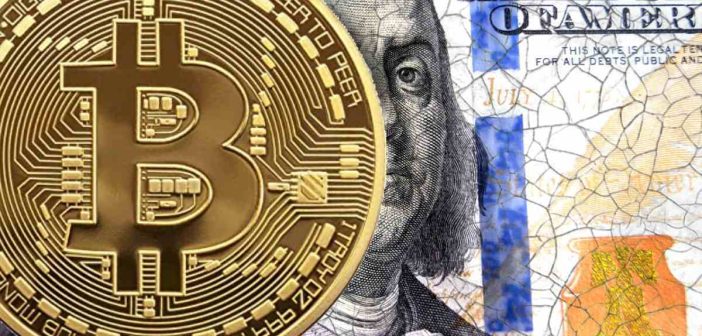The term Bitcoin safe haven is gaining new meaning as macro analyst Raoul Pal warns of serious financial imbalances in the U.S. economy. According to Pal, rising debt, a shrinking labor force, and central bank interventions are setting the stage for long-term currency devaluation. In this context, he argues, Bitcoin is becoming the only reliable hedge against macroeconomic risk.
Bitcoin Safe Haven Supported by Debt and Demographics
Pal recently shared two macroeconomic charts to support his view of Bitcoin as a safe haven. The first chart shows how U.S. debt as a percentage of GDP has risen sharply since 2002, while labor force participation has declined. This trend accelerated after the 2008 financial crisis and again in 2020.
He points out that an aging population contributes less to the economy but demands more public spending. Thus, the Bitcoin safe haven narrative grows stronger as demographic pressures continue to strain the fiscal system.
Why Bitcoin Safe Haven Status Is Strengthening
Pal explains that once debt exceeds 100% of GDP, the economy cannot grow fast enough to pay the interest. As a result, central banks often resort to money printing to cover deficits. This leads to currency debasement, which weakens the dollar’s long-term value.
In contrast, Bitcoin has a fixed supply and does not rely on governments or banks. Therefore, many investors see it as a shield against inflation and fiscal instability. As Pal puts it, “Bitcoin absorbs the monetary damage while gaining from adoption effects.”
Charting the Bitcoin Safe Haven Thesis
The second chart Pal shared shows a strong correlation between U.S. federal debt and net liquidity from the Federal Reserve. When liquidity rises, Bitcoin tends to follow — reinforcing its role as a responsive asset in expansionary policy cycles.
This relationship helps explain why the Bitcoin safe haven concept is becoming more mainstream. Unlike fiat currencies, Bitcoin thrives in environments of debt expansion and monetary easing.
Institutional Interest Follows the Bitcoin Safe Haven Trend
As macro conditions worsen, more institutional investors are treating Bitcoin like digital gold. Funds, asset managers, and even governments have started including Bitcoin in their balance sheets or strategic models. They aim to offset losses from traditional currencies.
This rising demand adds to Bitcoin’s safe haven status. It also reinforces Pal’s point: crypto is not a fringe asset anymore — it is becoming part of global macro strategy.
Conclusion: Bitcoin Safe Haven Narrative Gains Momentum
Raoul Pal’s analysis adds fuel to the Bitcoin safe haven narrative. With U.S. debt passing 100% of GDP and demographic trends pointing downward, Bitcoin is no longer a speculative asset. Instead, it may be one of the only tools investors have to preserve long-term value in a system overwhelmed by debt and declining productivity.




